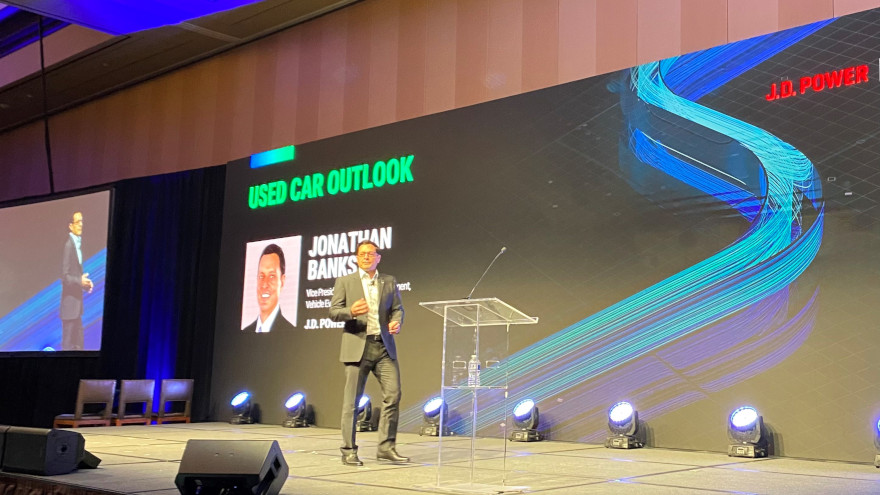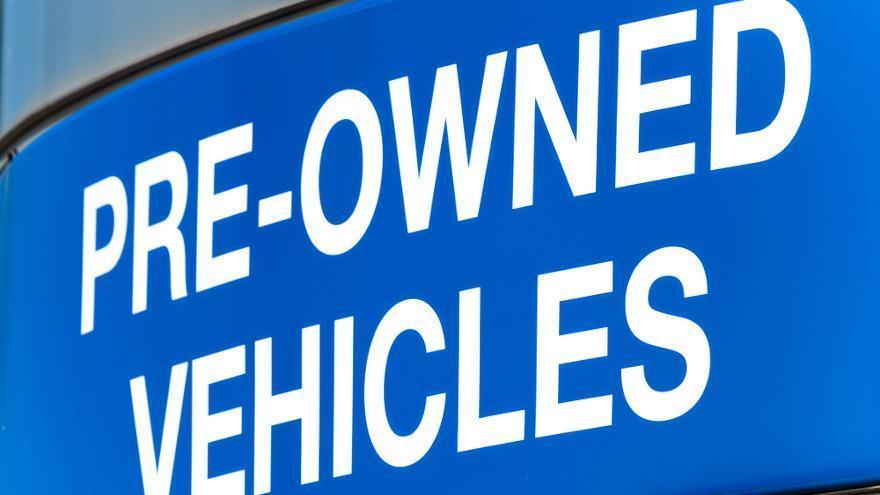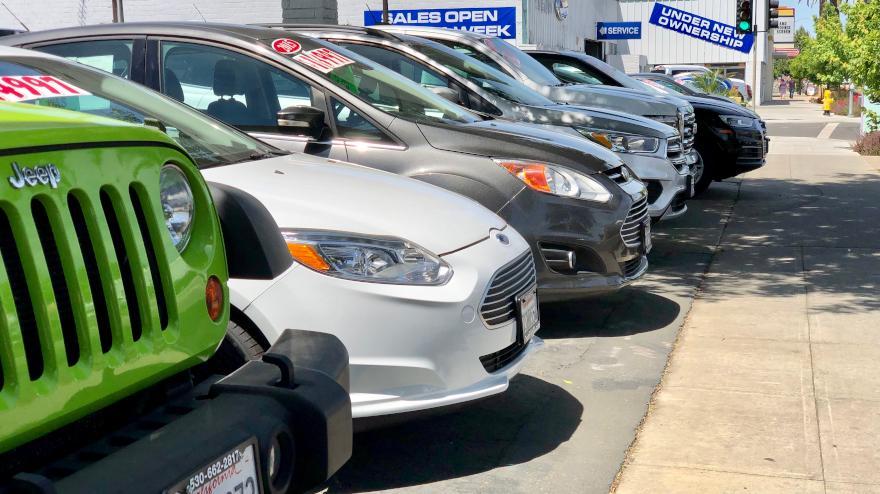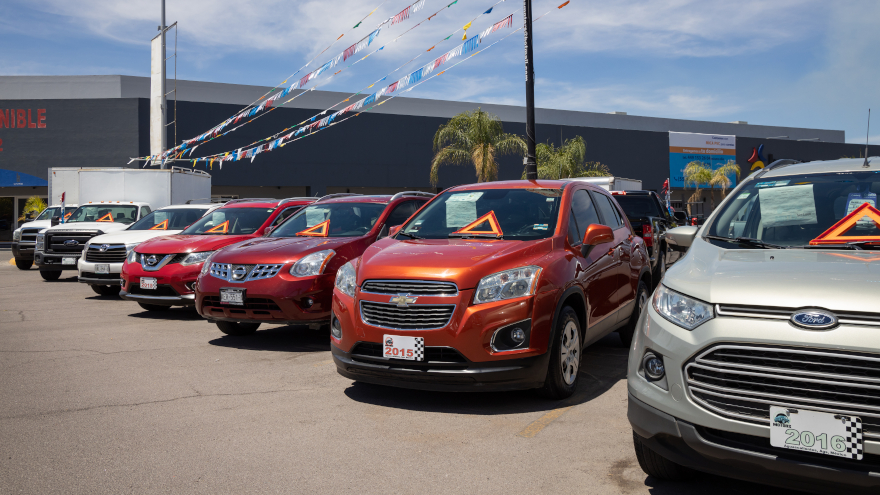There is something surreal about today's retail automotive market.
Assumptions, once taken as articles of faith, are not only being questioned but also discredited altogether. Take, for example, the role vehicle leases have traditionally played in creating a win-win-win value proposition that has well-served consumers, dealerships, and automotive manufacturers for decades.
For consumers interested in driving vehicles they could not afford to purchase outright, leasing offered a cost-effective option that broadened participation in the new-vehicle market. The arrangement was a major plus for manufacturers because it expanded demand for new vehicle production.
Dealerships, however, were arguably the biggest winners. Leases accelerated the movement of low-margin new inventory while presenting a virtual guarantee that high-margin used vehicles would return to their lots for resale after three years.
The post-pandemic, pre-recession economy has shattered this paradigm.
According to J.D. Power research, lease returns are down 40% year over year. Leaseholders are, in growing numbers, exercising their buy-out rights as the elevated value retained in today's cars and trucks changes the financial calculus. Many find themselves in a better equity position at the end of their lease than when they drove their dream car home. It is a paradox.
On the flip side, the dynamics that somehow turned historically depreciating assets into high-performance personal finance instruments have created an expensive, almost hostile, buyer's market.
Lease deals today are currently horrible. It is not unusual for leaseholders who signed up for a $500 per month payment three years ago (before the pandemic) to face the dubious opportunity of shelling out twice as much for a comparable vehicle today. Moreover, lease payments that once required low or no money down have been replaced with demands for $5,000 initial deposits.
The picture is no rosier for conventional sales financed with loans. Monthly payments for 72-month (six-year) contracts reached a whopping $710 a month in 2022. While it is a higher payment than today's leases (currently averaging $594), current deposit requirements lease narrow any clear distinctions between loaning and leasing. As federal authorities keep their interest rate policy options open in the fight against inflation, the trajectory for 2023 is uncertain at best.
All of this explains why only 17% of new-vehicle sales today have been executed through new lease originations, down from 30% in 2019. The downward trend is gathering momentum, creating an interesting force-multiplier effect. As consumers buy out their leases, the market is deprived of new transactions that would close under normal market conditions. In the process, the industry is also losing sorely needed inventory to meet aftermarket demand.
With the old virtuous cycle of inventory and high-margin sales enabled by the leasing environment disrupted, the automotive retail sector finds itself in a situation that is unappealing to all but the most financially fluid consumers. The good news, if one can call it that, is that the ability to supply that market has shrunken to address this downsized demand.
As a result, the dynamics of today's lease market are contributing to a market that will manage to maintain margins (because of low inventory) but struggle to achieve growth (because of low volume) through the foreseeable future.
In the immediate future, dealers and OEMs will have to revisit their engagement strategies to identify–and incentivize–consumers possessing coveted leased vehicles.
Industry players will also need to focus on long-term strategies to rejuvenate buyer interest in lease trade-ins or develop new revenue streams to replace this receding high-margin category.
David Paris is director of market insights and valuation services at J.D. Power.
Think of the used-car supply picture back in 2010 through 2012.
These were the years in the aftermath of the Great Recession, automaker bankruptcies and, ultimately, new-vehicle sales tanking.
“All you dealers out there that remember trying to get used cars, especially lease maturities back in 2010, 2011, they weren't there,” Jonathan Banks, vice president of product and vehicle valuations at J.D. Power, told a crowd at the J.D. Power Auto Summit last week in Dallas.
“We’re in a similar situation with …
Read more
Since the COVID-19 pandemic hit in early 2020, the talk has been of tight used-car inventory, new-vehicle production shortages and high prices for both used and new.
The tides are finally turning, albeit slowly. That said, inventory acquisition for used inventory is still an issue for many dealers.
And trade-in appraisals, reconditioning costs and valuation for used vehicles are top-of-mind for dealers.
Two sessions at NADA Show 2023 this week in Dallas touch on these very topics in detail.
Randy Barone, vice president of business development at ACV Auctions, will be leading a session titled, “Windshield or rear-view mirror? How do you manage used cars?,” where he will discuss what he sees as unprecedented levels of volatility in the last several years in the used-car business.
According to the session summary, Barone says to dealers, “Prepare to pivot ahead of market fluctuations and inventory volatility through better data to value cars accurately, buy more profitable vehicles and manage inventory.”
Dennis McGinn, founder of Rapid Recon, which has been acquired by Vehlo, will speak on effective recon strategies for retail and wholesale markets in another session at NADA. Matt Hubiak of Swickord Auto Group, Jared Ricart of Ricart Automotive Group and Tom Dunn of Fred Martin Superstore will join McGinn, offering the dealer perspective to this topic.
In an interview with Auto Remarketing, McGinn got down to the nitty-gritty of effective recon strategies for retail and wholesale markets that will be covered in detail during his NADA session.
McGinn said that the used-car market is still in transition across the U.S., “from dealers still scrambling for inventory to others experiencing a softening of demand and the beginning return of margin compression.”
COVID and its impact on new- and used-vehicle availability has forced dealers to put “buying centers” together to take advantage of acquiring vehicles from local markets, finding success in most of these endeavors, according to McGinn.
But there are other changes taking place as well, especially in the recon department.
“I also am seeing a re-focus on reconditioning processes, because of the frantic times of buyers standing at dealers’ doors willing to pay whatever price is asked, and dealers needing sale-ready vehicles to sell them,” McGinn said. “That only happens when reconditioning can adjust to the market and volume demand on the fly.”
Reconditioning workflow software can help with these processes, although McGinn said the industry is still not seeing across-the-board adoption of these digital tools.
But the dealers who have embraced workflow accountability “are generating excellent examples of creating and delivering peak reconditioning performances using standardized metrics,” he said.
The results? Creating for dealers a much better chance of predicting how to respond quickly to ongoing demand and inventory availability.
“So, in a current market like this one, the used-car operation backed by modern reconditioning best practices is making everyone’s job easier and more controlled,” McGinn said.
Another way to look at it: The workflow structure, organization, and performance reporting provide everyone — from the general manager to the technicians to the detailers and to vendors and the sourcing inventory folks — provides “a more predictable and accurate way of running a dealership.”
As the wholesale market changes yet again, and as dealers find it necessary to source older and higher-mileage vehicles for their used inventory, McGinn contends those not using the most efficient reconditioning processes will have difficulty bringing these vehicles to sale-ready condition profitably.
“The same can be said of dealers who want to retail vehicles they once wholesaled,” McGinn said. “Their ability to carefully monitor and manage recon costs and quickly get such cars sales-ready is critical to capturing margin on these higher-risk vehicles.”
Transparency throughout the whole recon process also continues to play a crucial role in auto retail. McGinn cited a survey of 1,000 potential car buyers from franchised and independent dealers, a study that Rapid Recon partnered with Valiant Market Research to conduct.
These surveys went out to potential car shoppers who will likely buy a vehicle within the next three years.
The findings underscore transparency’s importance to the auto retailer/custom relationship. When asked to rate the importance of transparency on a 10-point scale, with 10 being extremely Important and 1 being not important, respondents rated transparency a 9.2 out of 10.
“To further probe the potential impact of transparency on customer behavior, the survey asked respondents to rate the importance of reconditioning reports – details of how the dealer reconditioned the used car a consumer is considering,” said McGinn. “Customers found reconditioning reports as part of the used-vehicle sales process appealing, 4.5 on a 5-point scale.”
Getting ahead of used market volatility key to success in today’s market
Barone, VP of business development at ACV Auctions, spoke with Auto Remarketing from a wholesale perspective, as well as offering tips on navigating “unprecedented levels of volatility” over the last several years. And the environment is changing once again as it normalizes to pre-COVID levels.
“Literally the ground beneath us is changing as we speak. You (buyers and sellers) were looking at used-car values from being at an all-time high. We have never seen the pricing index as it has been,” Barone said.
That said, look back to July, and the industry saw these numbers coming down — ”rapidly coming down,” he said.
This equates to a percentage or a percentage-and-a-half per week, according to ACV data.
These declines show the impact of where we would be in a “normal” market pre-COVID holiday season.
But the market has come off such a high in the dealer market, dealers are holding onto vehicles too long to get the price they have been used to the past few years.
“Not too long ago, they (dealers) were able to basically put any price on whatever they wanted, and that car would sell,” he said.
So, dealers have gotten away from gaining data and performing analysis on every vehicle buy and sell.
“And right now, what we’re seeing is the ramifications of that,” said Barone. “So as the market starts to correct, we’ve got dealers with the wrong cars; we’ve got dealers with cars that are way overpriced; we have dealers that have chosen to hang onto cars too long.”
How does the industry deal with this? Barone, who leads regular 20 Group sessions, is pushing dealer clients on establishing the “right places” to acquire inventory.
“We’re telling them the best places to get vehicles right now, and we have to go back and make sure we’re looking for as many cars as we possibly can be monitoring, or that are coming back into the dealership,” said Barone. “Because that market is still a very viable opportunity for these returns. And then buying cars out of other used departments and buying cars directly from the consumer, as well.”
So, where’s the best source of cars right now?
According to Barone, it comes down to this:
- Where do I get the best quality?
- Where are these good vehicles for my inventory, in particular?
“They’re often going to be cars you buy directly from the consumer … so, that focus helps correct the market,” Barone said.
In the changing market, dealers need to focus and educate themselves on buying cars based on data — for example, the data from their respective dealer management systems.
Look at the “DNA” of a store. And look at the market data.
“Market data is not just (looking at) if this car is doing well on my market, but does it turn? Does it look like there’s a lot of them that are selling? Not ‘for sale’ — but has there been a lot that have sold?” Barone said.
“So those are better to be able to stock and have that inventory when we get back to using real information to make inventory decisions,” Barone said.
On top of having the right car and getting it from the right source, “it comes down to having the right number of cars to hit the dealers’ goals.
“I know what days’ supply my system says is right, I look in at whatever my inventory management system is, and it tells me that this is my day supply,” Barone said.
But what the industry has moved away from is knowing “what makes all that up.”
“We have to really dial in, so during my workshop we’ll actually break out, what is days’ supply (and) how is it calculated?,” said Barone. “Not just that it’s showing a number in my inventory management system, but what really goes into that?”
He contends dealers need to have a very short supply right now when things are still so volatile in the wholesale used-car market.
“Then I want to make sure that I’ve got the right price; the right number of cars, and the right supply of cars, and even have it dialed into when I’m replenishing those cars, so that I am keeping a steady inventory,” said Barone.
Then, dealers need to have a “renewed process” with these cars, either by trade or via buying from a wholesale service or consumers to “fill the gap.”
“We have to get back to building value, building a better description of those cars and building more value, because it’s going to come back to not just having the right car, but just driving that car directly to make that car stand out against the competition,” Barone said.
Before the new-car shortage, the main way to stand out was pricing the cars against each other — but now “that’s a recipe for disaster,” Barone said.
“The way you’re going to make your car stand out is by building a better description, having a better process, describing your vehicles better online and also on the lot,” said Barone. “That’s going to be a big focal point.”
The supply of used cars on dealer lot appears to be making some progress, according to the latest CarGurus Vehicle Availability Index & Insights report.
The CarGurus Used Vehicle Availability Index for January shows a 3.9% uptick in used-car inventory at dealerships compared to December. Meantime, the year-over-year gap has slowed to 0.8%.
“The recovery in used inventory volumes is one reason we saw a recovery in 2021 used sales, while new sales volumes continue to be impacted,” Kevin Roberts, who is director of industry insights and analytics at CarGurus, said in a blog post about the index.
In its latest Market Insights report, Black Book indicated that while used-car retail listings for the week ending Saturday were down slightly from the prior week, they continue to improve from where they started 2022.
“Used retail listing volume decreased slightly but still sits above where CY2022 began. We anticipate that used retail listings will increase in the coming weeks as dealers attempt to stock their lots,” Black Book said.
This follows some good news on the inventory front to cap 2021.
Cox Automotive said in a Data Point report last month that used-car days’ supply for dealers was at 51 in December, beating the 45 days’ supply of used vehicles in November. It had been since mid-January 2021 that there were was more than 50 days’ supply of unsold used vehicles on dealer lots, Cox said.
And while supply has improved, there still remains a sharp increase in the listing prices of used vehicles.
In January, the average used-vehicle listing price was north of $31,000, CarGurus data shows. That represents a 39.8% uptick from January 2021, when used prices were below $23,000.
It’s even more stark a divide when you consider that for the entire first half of 2020, used listing prices were $21,000 or lower, the CarGurus data shows.
“Interestingly, the average listing price for used continues to rise even with a near-full recovery in used inventory, highlighting the continued impact on missing new inventory throughout the industry,” Roberts said.
For context, new-car inventory last month was 69.7% softer than January 2021. It was down 5% month-over-month.
In terms of turn times last month, used vehicles were moving 2.7% slower than they were in December, but 5.8% quicker than they were in January 2021, CarGurus said. The turn time was nearly 67 days last month.
The company said the month-over-month drop is likely due to seasonality.
Dealers looking to shore up their supply of used cars by purchasing from consumers may be in luck.
Citing internal data from 2021, Cars.com says 41% of its in-market audience aims to sell their vehicle prior to making a purchase.
This means “new opportunities for dealers to …
Read more
Here is some potential good news for dealers when it comes to used-vehicle inventory: they might be able to source more consumer cars this year.
According to 2022 State of the American Driver report from car ownership app Jerry, 58% of drivers said they would consider selling their vehicle this year.
Read more
Need car, will travel.
That’s been the mindset for many recent and prospective car buyers, who have gone or are willing to go the extra mile (or dozens of miles) to find that vehicle, amid shortages in both new and used cars.
According to survey data from Cars.com, 9.8% of recent car buyers went to another state to make their vehicle purchase, with 56.9% of that crowd going used and 43.1% going used.
That particular survey was conducted online between May 18-24 among consumers who had purchased in the prior six months.
Just over half of consumers who left their state to make a purchase went 25 miles, according to Cars.com. But some consumers were willing to go even further, with 19.7% going 50 miles, 9.6% going 100 miles and 6.7% going 150 miles.
What’s more, 13.3% traveled 250 miles or more, the data found.
Cars.com conducted a separate survey from May 25-28, and discovered that 12% of respondents planned to buy a car in the next six months.
Nearly two-thirds (65%) of those six-month intenders said they were open to shopping for cars in other states. And 56% said they’d go 100 miles or farther to find that car.
“With the current auto inventory challenges, recent car buyers are going to great lengths to find the car they want,” Kelsey Mays, who is Cars.com assistant managing editor for news, said in a news release. “I don’t anticipate this trend slowing down, either. Of consumers currently in the market and shopping for a car, 65% said they would consider purchasing in another state.”
And here’s a bit of good news for the used-car side.
Fifty-three percent of in-market shoppers have a trade-in, according to Cars.com.
And 76% of in-market shoppers know they can sell their ride to the dealership even if they’re not making a purchase. Given the used-car supply shortage, dealers could use that extra inventory from consumers.
And some are turning to advertising to let consumers know they’re willing to buy their vehicles in hopes of augmenting their used-car supply, Lauren Donalson of PureCars says in this guest column for Auto Remarketing.
“Today’s more progressive dealers are activating creative, new ways of sourcing used cars, directly from consumers who own and live in their vicinity. By first leveraging market days’ supply, market days on lot, and scarcity insights, dealers can determine which vehicles are the most likely to sell quickly and at a premium in their market,” Donalson writes in the column.
“Then, dealers activate Facebook lead ads featuring 'We’ll Buy Your Car' or '$1,500 Over Kelley Blue Book Value for Your Trade' messaging. Consumers are likely to respond to these ads and offer used-car inventory to dealers at a more affordable price point than at an auction,” she said.
It doesn’t look like the wholesale auto market is getting back to the apex of supply any time soon.
In 2020, wholesale volumes fell 1.8 million units from their peak a year earlier, according to a quarterly report from Cox Automotive, which attributed the slowdown to a trio of pandemic-spurred trends: slow retail sales, the lowest repo rates on record and the soft rental car market.
The inflow of 15.1 million units to wholesale channels last year marked an 11% year-over-year drop, but that should tick up the next two years, yet still not reach 2019 levels.
Wholesale supply is projected to reach 15.7 million units in 2021 and improve again in 2022, reaching 16.3 million units, before taking a tumble in 2023 to 15.8 million units, the Cox data shows.
“2019 was the peak year for wholesale supply. And while we will see improvement in ’21 and ’22, we still won’t get back to 2019 levels as off-rental, off-lease and repo remain below 2019 levels,” Cox Automotive Jonathan Smoke said in an online presentation. “Then in 2023, the market will see off-lease fall by 18% as the declines in leases in 2020 comes home.
“The good news is that stronger retail sales is causing dealer consignments and dealer-to-dealer volumes to grow even more strongly than we originally expected,” he said.
Cox Automotive expects dealer consignment to grow in each of the next three years, after falling from 8.7 million in 2019 to 7.8 million in 2020.
It is projecting dealer consignment will bounce back to 8.5 million units this year, then reach 8.8 million in 2022 and 8.9 million in 2023.
Meantime, off-lease volume will remain steady this year and next at 4.0 million, before dropping to 3.3 million in 2023.
Repo volume, which fell from 1.7 million units to 1.3 million a year ago, is expected to climb back to 1.6 million this year.
Rental risk volumes remain tight. Cox forecasts them to drop again this year, falling from 1.4 million in 2020 to 1.2 million in 2021. There were 1.7 million rental risk units in the wholesale market in 2019.
In a more granular look at wholesale volume, the latest Used Market Update from J.D. Power shows weekly trending in wholesale auction sales.
For the week ending April 11, there were about 91,000 sales of wholesale units up to 8 years in age, the firm reported.
That’s up from the 90,000 sales the week of April 4. However, the last two full weeks of March had an average of 94,000 auction sales per week.
“While week-over-week sales are relatively consistent, sales continue to run approximately 20% to 30% below prior year’s levels and last week’s result continues to emphasize how lean the wholesale marketplace is running, which is helping keep used prices strong,” J.D. Power said in the analysis.










